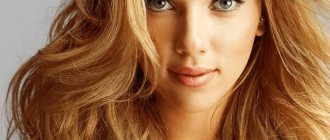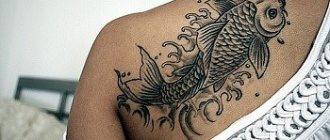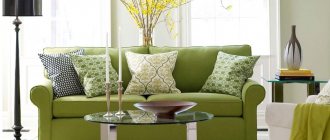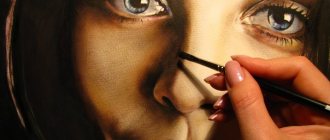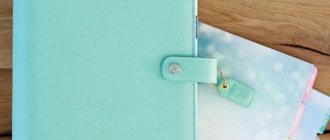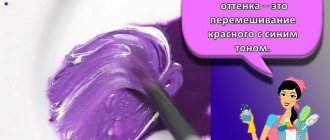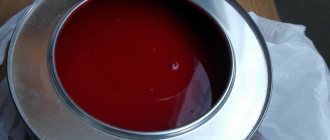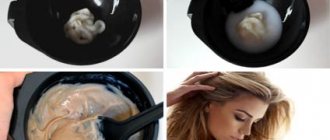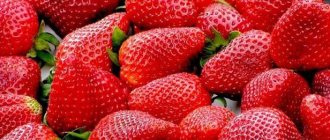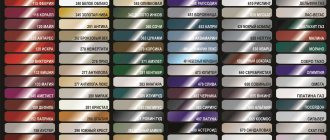Red is the brightest and catchiest color in the main palette. It is chosen by charismatic, courageous people, and in the interior it looks bold, defiant, and, moreover, is associated with strength and power.
There are many shades of red that are created by mixing. How to get red color yourself? Since it is basic, you can only get its different shades at home; for this you need to know a number of subtleties.
Basic Rules for Mixing Food Colorings
When mixing food coloring, it is important to follow several rules and then the result will definitely please you.
Food pigments are divided into water-soluble and fat-soluble, which is usually indicated on the packaging. Fat-soluble paints are used for coloring chocolate, butter cream, and cocoa butter. For cream, caramel, dough products, glaze, mastic, you should choose water-soluble dyes.
The wrong type of dye will not give you the desired result, or will completely ruin the dish. You cannot mix two types of dyes with each other.
Dyes can also be divided according to the form of release: dry, liquid and gel.
- Dry food colors are usually diluted in water or vodka before being added to the dish. Can also be used as a dry pigment for coloring mastic or wafer sheets. When using dry paints, mix them diluted. That is, first dilute the main color, then gradually introduce additional colors into it. As soon as the mixture acquires the desired shade, it can be added to the dish.
- Gel dyes are the most convenient to use, since they do not need to be diluted like dry dyes, and they do not add excess moisture like liquid paints. To color cream, dough or caramel, you can mix colors directly in the dish.
- Liquid dyes have a lower density than gel dyes, mix well with each other and produce beautiful watercolor shades. They are well suited for painting on pastry surfaces and coloring biscuits. You can mix this type of paint directly in a dish.
Always test the resulting color on a small part of the dish before coloring the whole thing.
Is it possible to mix dry and liquid food coloring with each other? Experienced chefs do not recommend doing this, as the result may be unpredictable. In order for the color to turn out beautiful, and the dish to be colored evenly and not change the consistency, it is recommended to mix dyes of the same type, release form and manufacturer.
You can buy high quality food colorings on the website 100ing.ru. The catalog includes dry, liquid, gel dyes, kandurin, as well as food markers. If you want to prepare a bright, beautiful dish or product, but do not accept synthetic pigments, pay attention to natural and safe, but no less bright, Luxomix dyes.
Food coloring is a fascinating activity that sometimes produces unexpected results. Experiment, try new things and create unique culinary masterpieces!
For our beloved readers, a 10% discount using the promotional code BLOG on all products weighing up to 15 kg in the online store of food ingredients 100ing.ru! Delivery and pickup throughout Russia.
How to make red
It is possible to make a red color only taking into account the presence of industrial conditions and the participation of special colors in the process. So, when printing, printing houses use strange combinations of dyes to create this color on paper:
- purple and yellow,
- fuchsia and yellow,
- yellow and black,
- blue and orange.
Professionals know the strict proportions of color combinations, sequence and technology. A similar procedure is carried out in textile production when dyeing fabrics.
In painting
While in a printing house it is possible to create a new base color, this will not happen in painting. Even using the same dyes in accordance with the typographic tables will not provide the required result. That is, it is impossible to make red by mixing gouache or another type of paint, and the artist will have to purchase it ready-made. But combining the basic red tone with other colors is only welcome, because through experiments you can get stunning shades.
In computer graphics
To create red on a computer, the RGB system is used. It allows you to build the desired model and get any tone, even a basic one. The development of such programs is carried out by programmers and computer engineers, creating colors using digital codes. There are other similar programs that build models of basic colors, and graphic editors help to diversify the palette of their shades and make the colors pure.
Natural dyes
Not so long ago, people made their own hair dyes, pigments for fabric, thread, knitting wool and other needs. They used dyes that are found in nature. Red color can also be obtained from natural materials. Here are the main ways:
- take bedstraw flowers, combine equal parts with alum, cook for 30 minutes, the result will be a bright red solution,
- mix St. John's wort and safflower flowers, cook in water until the broth becomes thick and has a reddish tone,
- cut the orange lichen, sprinkle it with soda, after 3-4 minutes cherry-colored juice will stand out.
You can even get the red color from a special type of worm that lives in hot countries. But for painting it is better to use store-bought paints, because natural pigments can give unpredictable results. Clothes painted with natural colors fade quickly and leave marks on the skin; this defect can only be corrected by the use of chemical paint fixatives.
What colors do you need to mix to get purple?
Bright purple color is extremely rare in wildlife. All sorts of variations and halftones are much more common. These are flowers of lilac, iris, orchid, wisteria, violet. To learn how to get a lilac color close to natural, it is advisable for a novice painter to study the laws of the color spectrum.
In fine art, to obtain purple, two basic colors are mixed - red and blue. Depending on the proportions, the resulting color scheme goes into a cold or warm range, combining the characteristics of these basic colors.
So, in order to achieve delicate lavender or violet undertones, the resulting color is diluted with white or pale pink. To prepare dark plum, blueberry, blackberry or eggplant tones, on the contrary, you will have to add black or brown pigment to the resulting color scheme.
Step-by-step instructions for getting pink
You need to understand that the base affects how the composition will look on the surface after painting is completed. Wood strongly absorbs solutions; on metal the layer will be smooth; the plaster layer may manifest itself differently depending on the type.
But the stages of working with different surfaces when preparing paint are the same.
You need to understand that the base affects how the composition will look on the surface after painting is completed.
Necessary materials
It is important in the choice of materials to use the appropriate type of red; the brightness level of the layer may vary from manufacturer to manufacturer. There are also different types of red based on hue, this indicator has a strong impact on the final result. Other colors may also be required; see what types are required in the pink mixing table.
As for the devices, you will need to have a container that is somewhat suitable in volume; plastic buckets are not in vain used for storing many paints and varnishes; the material does not affect the properties of the composition.
For construction purposes, it is usually necessary to mix many liters of paint, so it is convenient to use special devices: a drill with an attachment for mixing liquid solutions, a construction mixer. But manual mixing is also possible, but it will be difficult to create a homogeneous mass in which not a single streak of dye remains.
It is not in vain that plastic buckets are used to store many paints and varnishes; the material does not affect the properties of the composition.
Paint selection
Modern formulations are usually produced in a wide range of shades, so you can often find a ready-made look. But this does not always work out, and you can use special colors to independently create the desired color tone.
In acrylic paint the base is white, which is necessary for this work. Colors that match the paint are also produced; you need to purchase the colors that are selected for mixing. Acrylic-based products stand out for their brightness and saturation, this is also taken into account when choosing dyes.
But these are not the only criteria that need to be taken into account; the technical characteristics of the compositions are important. For outdoor and indoor work, you will need different paints that can withstand the environment.
Acrylic-based products stand out for their brightness and saturation, this is also taken into account when choosing dyes.
Preparation and main process
The containers and tools that will be used for tinting are cleaned; the base must also be clean. The paint layer is thin and highlights any imperfections; the walls are leveled before painting.
It is recommended to immediately mix the entire required volume; repeating the exact shade with manual tinting is problematic, and it may not work even if the proportions were written down.
When preparing paint to cover large areas, it is better to turn to specialists who have special tinting machines that can reproduce the shade exactly.
Red color is dripped onto the white paint, or you can pour in red paint, which is taken in a small volume. The composition is introduced little by little, and each time mixing is done thoroughly in order to accurately assess the result. If required, a different color is added.
Afterwards, a test stroke is made on the base; after the layer dries, the resulting shade will be visible. If it is suitable, then the entire base can be painted.
It is recommended to immediately mix the entire required volume; repeating the exact shade with manual tinting is problematic.
How to get different shades of purple
Purple has many variations and derivatives.
To achieve different undertones to the base color, you need to add some black or white, and for some warm tones, yellow or brown.
For example, to get purple, a small amount of yellow is added to the base color, and when you add a drop of brown, you get a noble eggplant color.
Shades of purple: palette, color names
Like any color in the palette, purple has light, bright and dark shades that have their own characteristics. The Panton palette contains 196 variants of violet, light - from pale lavender to violet, dark - from iris to black grape.
The main shades of purple include the following:
- lilac - a violet color diluted with white, obtained from a combination of 2 basic colors in different proportions (received its name from the shrub of the same name);
- iris - a bright, rich color named after a common garden flower;
- indigo is a bright blue with a purple tint, named after the plant Indigofera tinctifera, the dry leaves of which are used to prepare a coloring pigment;
- purple is a mixture of red and blue, the variety of halftones of which depends on the proportions of the primary colors, which go into a warm or cold palette;
- lilac - purple strongly diluted with white (with the addition of gray);
- eggplant - a complex version of dark purple with brownish notes, reflecting the color of the skin of a ripe eggplant;
- blueberry - a deep and dark blue-violet tone, named after the wild berry;
- lavender - a delicate lilac undertone with light pink notes, named after the flower of the same name;
- plum - a warm matte shade of purple, named after the fruit of the same name;
- grape - dark rich tone, close to black, named after black grapes;
- amethyst is a moderate purple color named after the semi-precious stone of the same name;
- glycine is a medium-light shade of purple that takes its name from the common garden flower, wisteria;
- fuchsia is a deep purple color named after a flower native to South America;
- orchid - pink-lilac halftone, named after the flower of the same name;
- blackberry - a cool, rich shade (a mixture of muted purple and indigo), named after the wild berry;
- violet is a tone that has several gradations - from very pale to bright, saturated tones, named after the home flower of the same name.
How to make light purple shades
Instructions for preparing light colors:
- lavender is obtained by mixing lilac with soft pink;
- purple can be obtained by adding white paint to rich purple;
- Lilac is obtained by mixing base violet with titanium white.
How to Make Dark Purple Shades
Instructions for preparing dark tones:
- plum is obtained by mixing red, blue, white and black;
- eggplant is obtained by adding brown and white to muted purple;
- blueberry is obtained by mixing bright indigo with black.
Features of mixing, is it possible to combine different types of paints?
To answer this question, we can confidently say no. Paints vary in brightness level and use different chemicals that may not be compatible with each other. And you can ruin all the material without achieving the desired effect.
Paints vary in brightness level and use different chemicals that may not be compatible with each other.
Pink delicate shade of red, which is achieved by mixing the base with white. If you can’t find the right option on sale, you can mix paints, resort to combining colors yourself, or tinting is done with special machines in the store.
Video: how to get purple color
Table for obtaining purple shades when mixing colors
To obtain the desired shade, strict adherence to proportions is necessary when mixing primary and additional colors.
How to make the desired color is shown in the table.
| The desired shade | Mixable colors | Proportions |
| basic violet (BF) | red + blue | 1:1 |
| dark purple | BF + black | 1:0,5 |
| light purple | BF + white | 1:0,5 |
| red-violet | BF + red | 1:1 |
| lilac | BF + white | 1:1 |
| lavender | lilac + white + red | 1:1:0,5 |
| purple | BF + yellow | 1:1:0,5 |
| indigo | BF + ultramarine | 1:1 |
| iris | BF + indigo + white | 1:0,5:0,2 |
| fuchsia | purple + indigo | 1:0,5 |
| plum | BF + black + white | 1:0,2:0,2 |
| bilberry | indigo + black | 1:0,2 |
| lilac | purple + white + gray | 1:1:0,2 |
| eggplant | purple + white + brown | 1:0,2:0,2 |
To obtain the desired shade, paint should be mixed gradually. The main rule: you can always add the missing amount, but it is unlikely that you will be able to remove the excess.
The theory of obtaining red shades
Before creating any dye, a graphic model of it is taken, where the quality and brightness of the colors are not initially taken into account. The production of basic tones is possible only in production conditions where colors are obtained artificially.
Manufacturers of gouache or watercolors usually produce standard sets of paints - 6 and 12 colors. The minimum includes 3 basic colors (yellow, red, blue), two additional ones that cannot be obtained (black, white), and green. The latter is easily created by combining yellow and blue paint.
In the color wheel, red is located in the center. It can be mixed with adjacent shades to create chromatic (colored) tones. Pairing opposite colors gives an achromatic (dirty, gray) hue.
LiveInternetLiveInternet
Quote from Rukodelkino
Read in full In your quotation book or community!
Color mixing table
The color mixing / paint mixing / shade synthesis table allows you to learn how to get the desired one when mixing two or more colors and shades. Such a table saves a lot of nerves and helps to decorate the world, having a limited number of colors available.
| Example | Required Color | Base Color + Mixing Instructions |
| Turquoise Blue | Blue + add some Green | |
| Turquoise | Blue + Green | |
| White-Blue | White + add Blue | |
| Wedgwood Blue | White + add Blue and a drop of Black | |
| Royal Blue | Blue + add Black and a drop of Green | |
| Dark blue | Blue + add Black and a drop of Green | |
| Violet | Red + Blue | |
| Grey | White + Add a little Black | |
| Grey | White + Black | |
| Gray cold | Gray + Blue or Green | |
| Pearl Gray | White + Add Black, a little Blue | |
| Gray warm | Gray + Ocher or Umber | |
| Medium Brown | Yellow + Add Red and Blue, White for lightening, Black for dark. | |
| Brown | Red + Green (Red + Yellow + Blue) | |
| Red-brown | Red + Brown | |
| Red-brown | Red & Yellow + Add Blue and White to brighten | |
| Golden brown | Yellow + Add Red, Blue, White. More Yellow for Contrast | |
| Tobacco | Yellow + Green + White + Red | |
| Mustard | Yellow + Add Red, Black and a little Green | |
| Mustard | Yellow + Red + Black + Green | |
| Beige | Take Brown and gradually add White until you get a Beige color. Add Yellow for brightness. | |
| Beige | White + Brown + Yellow | |
| Eggshell color | White + Yellow, a little Brown | |
| Not quite White | White + Add Brown or Black | |
| Pink-Grey | White + Drop of Red or Black | |
| Gray-blue | White + Add Light Gray plus a drop of blue | |
| Green-Gray | White + Add Light Gray plus a drop of Green | |
| Khaki | Brown + Green | |
| Gray coal | White + add Black | |
| Avocado | Yellow + add Brown and Black | |
| Orange | Yellow + add Red | |
| Gold | Yellow + a drop of Red or Brown | |
| Yellow | Yellow + White to lighten, Red or Brown to darken | |
| Lemon yellow | Yellow + add White, a little Green | |
| Lemon Yellow | Yellow + White + Green | |
| Light brown | Yellow + add White, Black, Brown | |
| Pale green | Yellow + add Blue/Black for depth | |
| Grass green | Yellow + add Blue and Green | |
| Olive | Green + add Yellow | |
| Light green | Green + add White/Yellow | |
| Turquoise green | Green + add Blue | |
| Bottle green | Yellow + add Blue | |
| Coniferous | Green + add Yellow and Black | |
| Green | Yellow + Cyan or Blue | |
| Green Olive | Green + Yellow | |
| Fern Green color | White + add Green, Black and White | |
| Forest green color | Green + add Black | |
| Green Coniferous | Green + Yellow + Black | |
| Emerald green | Yellow + add Green and White | |
| Light green | Yellow + add White and Green | |
| Aquamarine | White + add Green and Black | |
| Pink | White + add a little Red | |
| Apricot | Red + Ocher + White (Red + Yellow + Brown + White) | |
| Chestnut | Red + add Black or Brown | |
| Royal Red | Red + add Blue | |
| Red | Red + White to lighten, Yellow to get Orange-Red | |
| Royal purple | Red + add Blue and Yellow | |
| Purple | Red + Blue + Yellow | |
| Dark purple | Red + add Blue and Black | |
| Tomato Red | Red + add Yellow and Brown | |
| Mandarin, Orange | Yellow + add Red and Brown | |
| Honey color | White, Yellow and dark brown | |
| Orange | White + add Orange and Brown | |
| Orange | Red + Yellow | |
| Gold | Yellow + Red or Brown | |
| Reddish chestnut | Red + add Brown and Black | |
| Red Burgundy color | Red + add Brown, Black and Yellow | |
| Crimson | Blue + add White, Red and Brown | |
| Plum | Red + add White, Blue and Black | |
| Chestnut | Yellow + Red, Black and White | |
| Dark brown | Yellow + Red, Black and White | |
| Copper Gray | Black + add White and Red | |
| Ocher | Yellow + Brown | |
| Terracotta | Orange + Brown (Red + Yellow + Brown) | |
| Black | Black Use Jet Black | |
| Black | Red + Blue + Green |

